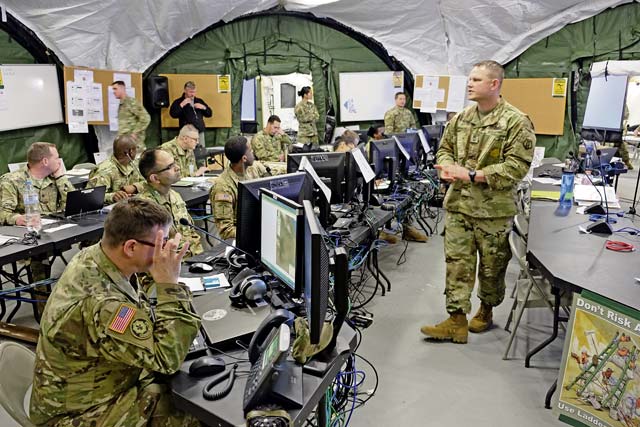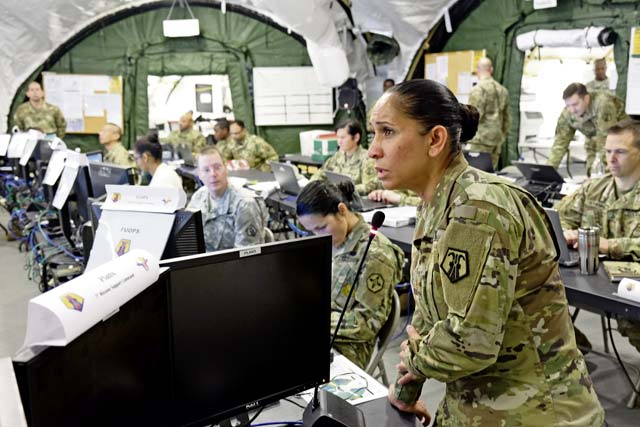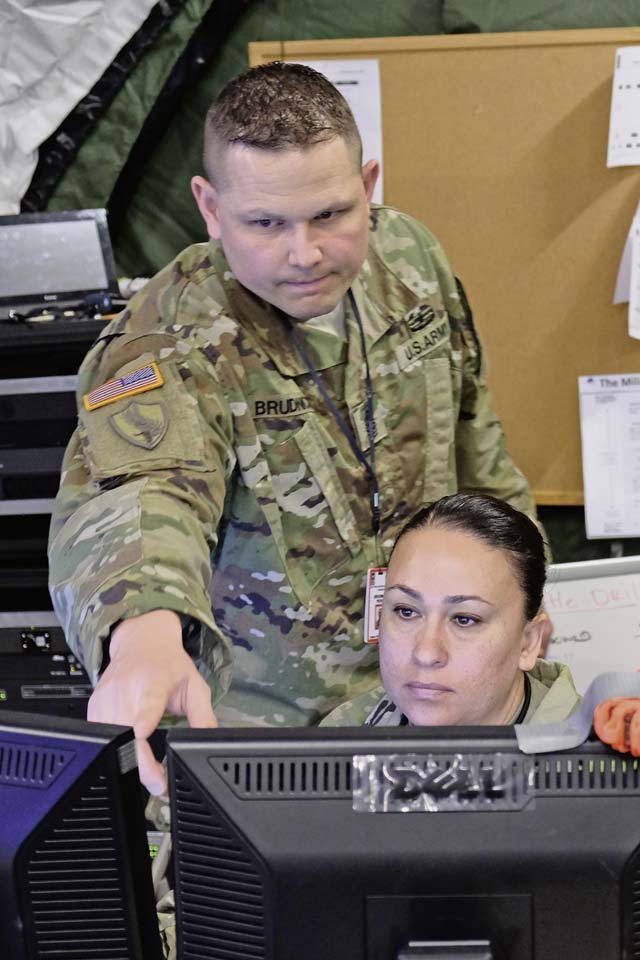
Practice may not always make perfect, but it does make for improvement.
The 7th Mission Support Command practiced mission command for two weeks during its annual Enhanced Collective Training exercise, which took place May 6 to 21 at Panzer Kaserne.
The command post exercise was planned and executed by the 7 MSC staff to practice mission command with a focus on the military decision making process. The 7 MSC’s downtrace unit, the Medical Support Unit – Europe, also participated in the exercise.
“The European theater is a learning laboratory for Soldiers and junior leaders and this was a great example of our implementation of a learning lab,” said Brig. Gen. Steven W. Ainsworth, the commanding general of the 7 MSC.
The exercise, planned by the 7 MSC staff and the Kaiserslautern Mission Training Complex, allowed the 7 MSC to practice its expeditionary operations capability by setting up a forward command post and operating out of it for the exercise.
The staff refined and codified its standard operating procedures, tracking mechanisms and decision-making process, Ainsworth said.
“So, for the staff as a whole, it was an incredible success,” he said.
Master Sgt. Pierre Brudnicki was the operations sergeant who oversaw the operations in the tactical command post tent. He managed and controlled direction for the battle room.
Brudnicki was responsible for the timeliness of the daily briefings and he also oversaw requests for information and the common operating picture, which is a snapshot of the mission on a computer or a map board.

The COP was significant to the exercise, he said. It had to provide the commanding general with accurate information he used to make decisions.
So, in addition to a computerized version of the COP, the battle staff created a paper version, with a map as a backup, in case power went out.
The job was sometimes chaotic and involved long hours, Brudnicki said.
Some days, it was difficult to get all the Power Point slides built and then put into the command post of the future system, he added.
“It was like flying into a mission but as the same [time] building it while you are flying,” Brudnicki said.
One of his goals was to match up the noncommissioned officers in the battle room with the jobs they were best suited for.
“You have to make those best choices and stick with them and follow through,” he said.
Maj. Maritza Garriga was the plans and future operations officer.
“In my role as FUOPS I produced fragmentary orders for activities that were not inside the scope of the original order and that called for further direction,” she said. “In my role as plans officer, I received operation orders or fragmentary orders from our higher command and conducted the Military Decision Making Process for any order that required full analysis.”
One of the staff lines of effort is to conduct the operations process through MDMP, she said.
“We exercised the inexperienced staff members to bring them to a level of understanding,” she added.
Garriga facilitated the plans role with the help of two staff members from the 7th Army Training Center Joint Multinational Simulation Center’s Mission Command Division, Jake Hall and Brian Kroontje. They stayed with the MDMP team throughout the exercise providing their experience and guidance.
During the exercise, the goal was to create challenges — which Ainsworth also called “friction” — for the staff to work through. This friction fostered learning and created adaptation.
The ability to adapt processes and procedures during a mission is what matters, he said.
The MDMP team had three friction points, Garriga said.
First, the team had to learn how to conduct planning using the MDMP model, and second, it had to learn aspects of the problem that were crucial to develop good courses of action to present to the commanding general.
Third, the group had to engage in team building and leader development, she added.
“Friction made the team understand what they did not know and made them develop means to obtain what they needed,” Garriga said. “Doctrinally, they walked away with the understanding that regardless of the problem, if they use a model that is proven successful, they will be able to provide the commanding general with the best COP and understanding for his decisions.”
The biggest obstacle the planning team faced was receiving a problem with which they were not familiar, she said. Planners must always be able to adapt.
“Somewhere early in the event it clicked, they were all in it to win it,” she added.
By the end of the exercise, Brudnicki felt his team had blended together and was working well.
“I think we achieved our goal in the battle room,” Brudnicki said. “We produced the most accurate information to brief to the commander.”
The key lessons learned, for Garriga, were to prepare tools to get to the heart of planning faster and to ensure everyone is abreast of the details of the mission.
“Every exercise is a platform for learning,” Garriga said. “There is no doubt in my mind that the leaders that participated in MDMP training are well prepared for a future event and can also mentor others.”



